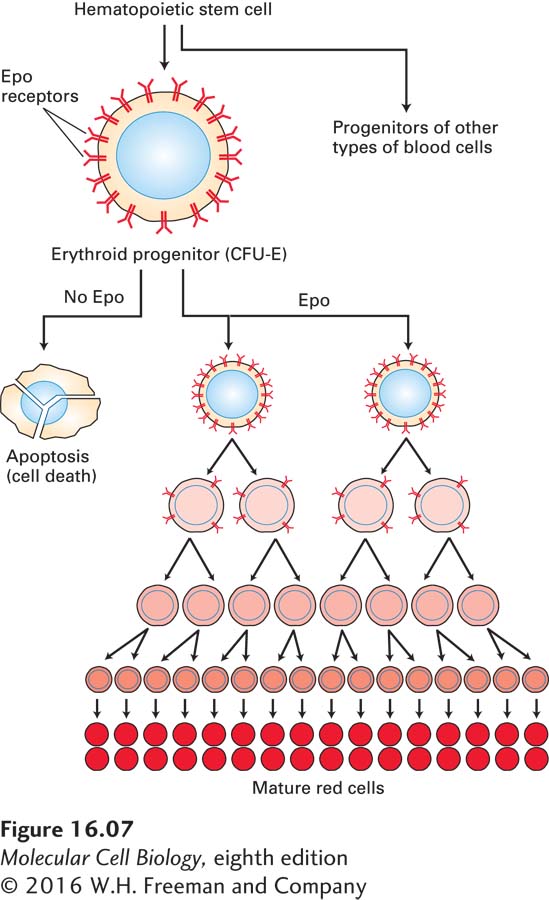
FIGURE 16- 7 Erythropoietin and formation of red blood cells (erythrocytes). Erythroid progenitor cells, called colony- forming units– erythroid (CFU- E), are derived from hematopoietic stem cells, which also give rise to progenitors of other blood cell types (see Figure 21- 18 ). In the absence of erythropoietin (Epo), CFU- E cells undergo apoptosis (programmed cell death). Binding of Epo to its receptors on a CFU- E cell induces transcription of several genes whose encoded proteins prevent apoptosis, allowing the cell to survive. Other Epo- induced proteins trigger a developmental program of three to six terminal cell divisions, induction of hemoglobin and many other erythroid- important genes, reduction in cell and nuclear size, and finally, loss of the cell nucleus. If CFU- E cells are cultured with Epo in a semisolid medium (e.g., containing methylcellulose), daughter cells cannot move away, and thus each CFU- E cell produces a colony of 30– 100 erythroid cells; hence its name. See M. Socolovsky et al., 2001, Blood 98:3261.
[Leave] [Close]